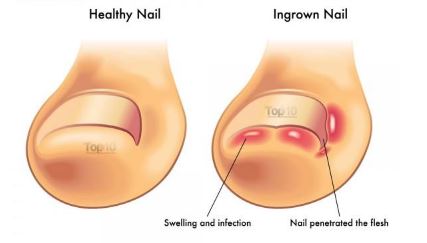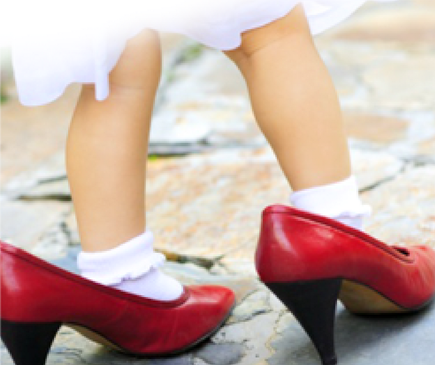 Ingrown toenails, technically referred to as onychocryptosis, is an often painful condition where the nail becomes wedged into the soft tissue of the toe often resulting in pain, redness, swelling and infection. These are all symptoms often associated with the condition however in some cases only mild discomfort is observed. Ingrown toenails are a very common condition that presents to a podiatry clinic. Males and females are equally likely to develop the problem and genetics plays a role in susceptibility. Whilst a lot of the time people are able to successfully treat ingrown toenails at home, those suffering from chronic conditions such as diabetes or experience severe pain and/or infection should always seek the guidance of a podiatrist. Common causes of ingrown nails Ingrowing toenails can be caused by a varying number of factors. Some may work in conjunction while others may be standalone and enough to result in discomfort. Some common causes of ingrown toenails include:
Common treatments for ingrown nails Most patients I have seen with ingrown nails, are able to be given relief with a simple resection (cutting) and removal of the ingrowing wedge of nail. Sometimes this can be done conservatively (partial nail clearing) or under a local anaesthetic in a procedure called a partial nail avulsion (PNA). Many things can be done at home however to reduce not just the pain or an ingrowing nail, but also to help treat any existing infections that may have formed as a result. Some methods include:
Ingrowing toenails are painful enough to disrupt your day, but they do not need to. If you, or someone you know is suffering from ingrowing toenails, please contact us and let our experience guide you on the road to happy and healthy feet.
7 Comments
6/10/2017 04:16:05 am
I've had an ingrown toenail before. It really gave an unsightly feeling back then. I was an active badminton player, and constantly running is one of its causes. I should've consulted a doctor back then. I wasn't aware of the consequences of having an ingrown toenail, as much as I am now.
Reply
10/9/2018 03:14:24 am
I'm glad you pointed out that leaving an ingrown toenail untreated can lead to more serious infections in your bones or blood. I've had an ingrown toenail for about a week now, but I thought the biggest issue was the inconvenience so I've just been trying to ignore it. I definitely don't want to get a bone or blood infection, so I'll definitely seek treatment for the ingrown nail!
Reply
2/25/2021 02:05:15 am
I had no idea that wearing shoes that do not fit you properly like heels may apply pressure to the sides of your nails which may result in an ingrown toenail. My wife recently received some heels for her birthday that she enjoys wearing to work, but he has noticed that one of her big toes has become especially sensitive ever since she started walking home last week. Maybe a podiatrist can help make sure that her toes are healthy.
Reply
3/30/2021 01:02:59 am
It makes sense that you should rely on a professional to help you treat your ingrown toenail. My brother's toenail has been hurting his toe lately. Maybe he should find an expert that can help find a solution.
Reply
1/9/2023 11:11:23 pm
Thank you for mentioning that ingrown nails can be treated gently (partial nail cleaning) or painlessly (partial nail avulsion) under a local anesthetic (PNA). My friend is in pain from ingrown nails. I'll recommend she get the non-surgical permanent ingrown toenail treatment.
Reply
5/8/2023 12:09:47 pm
Thank you for the helpful information. If you want to know more about foot problems, treatment and others, you can visit this site.
Reply
Leave a Reply. |
Archives
June 2021
|
|
Contact Details
Call 9542 3330
99A Loftus Ave, Loftus NSW 2232 Hours Monday & Wednesday 8am - 6pm Saturday: 8am - 12pm Early morning or later evening available by appointment Our reception is available for walk-ins on Monday, Wednesday & Saturday. Or by telephone 7 days. |



 RSS Feed
RSS Feed